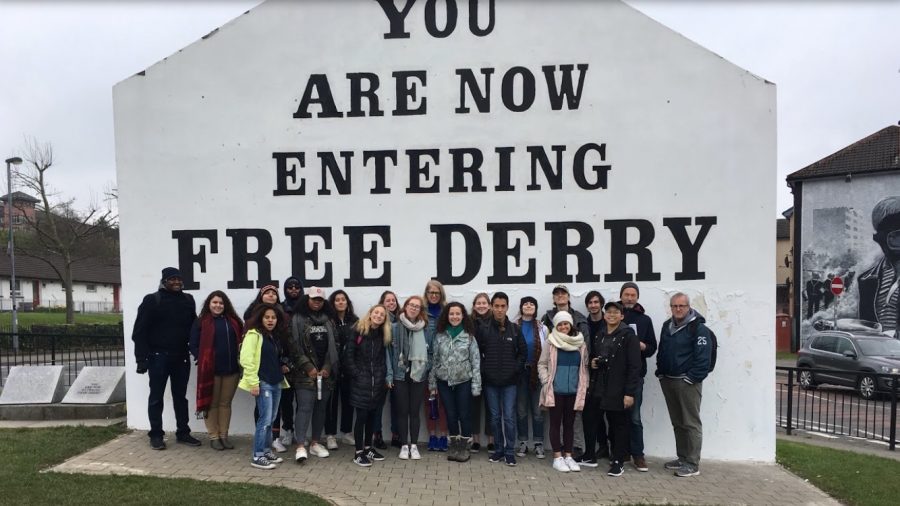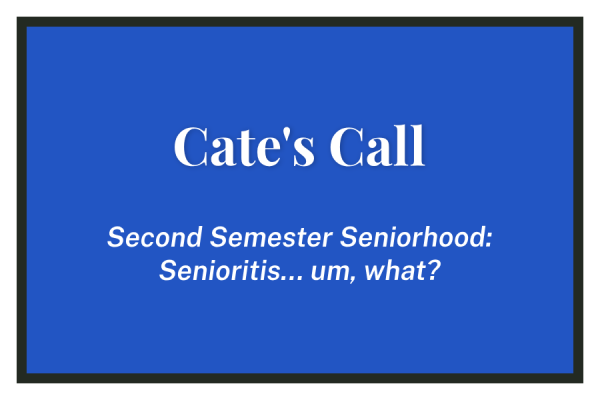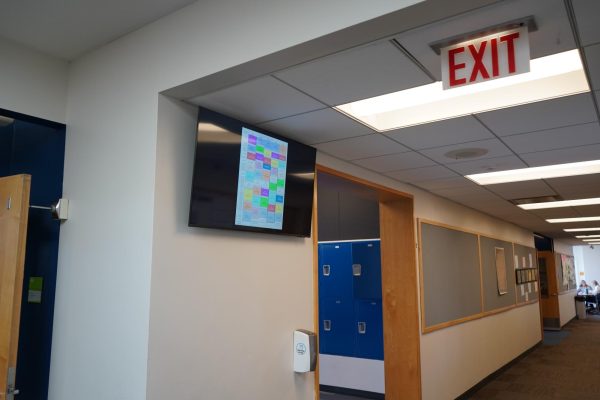Spring Break Trip To Ireland
Students Experience History
Over spring break, 3 teachers and 18 students, myself included, went on a week-long trip to Ireland, where we learned about the country’s vibrant history. Going into this trip I knew very little about Ireland other than the accent and potatoes, but after going on what felt like a grand tour of the country, I am eager to keep learning. Right away, I realized that Irish history is confusing and fascinating, but so integral to every way the country acts and represents itself.
We started the trip in Dublin where we toured the General Post Office, a grand building in the center of the city with columns, topped with statues, and learned about its having been the headquarters of the Easter Rising, a rebellion on Easter Monday in 1916 in which a group of Irish nationalists declared the creation of the Irish Republic and staged a rebellion against British rule in Ireland. The rebels captured several important buildings in Dublin and fought with British troops.
That night we ate fish and chips at an Irish pub and got to hear a live band play music and see a dancer perform a traditional Irish dance. It was such a fun way to experience modern Irish culture.
A few days into the trip we drove two hours north to Belfast where we took a tour of a town divided between Catholics and Protestants, who represent the two conflicting sides of the country. Irish Catholics are often Irish Nationalists, and people who want Ireland to become its own republic, while Protestants are typically Unionists, meaning they want to remain a part of the United Kingdom.
On this tour, and throughout our visit in the country, we saw a lot of murals painted on the sides of buildings, which were often residential. What I found most remarkable about these murals was not only the stories and perspectives they portrayed but that they were all left alone– nothing was vandalized by the people who disagreed with what the painting showed. These images are very simple, painted in vibrant colors and often on the sides of homes. I asked one of our guides in Derry, another city in Northern Ireland, what residents thought about living in homes with these murals on the sides, and he said that people are honored to have these images there.
Irish people have such pride in their country and so many stories to share that make the history really come alive. When we visited Derry we learned about Bloody Sunday, a march in which Catholics protested against the British internment of Irish Nationalists. British Paratroopers opened fire and killed 13 of the protesters. At the Free Derry museum, we spoke with a man who told us that one of the murals we saw was of his brother– one of the youngest people killed during Bloody Sunday. One part of the small exhibition displayed clothing worn by people who were shot in the riot. Seeing the bullet holes was jarring and made the story feel all the more real.
Beyond learning about the history of Ireland, we also saw some incredible landscapes. Our longest hike of the trip was to Giant’s Causeway, made up of about 40,000 interlocking basalt columns which formed after an ancient volcanic explosion. When the Irish first discovered this, they believed that these columns, were built by a giant. Later in the trip, we went to the Aran Islands, a short ferry ride away from the mainland, where we took a short tour and a hike up to the edge of a cliff with amazing views from 330 feet above the Atlantic Ocean.
People don’t learn Irish history like we do other time periods. If you have the opportunity to travel to Ireland, don’t hesitate for one second to do so.













